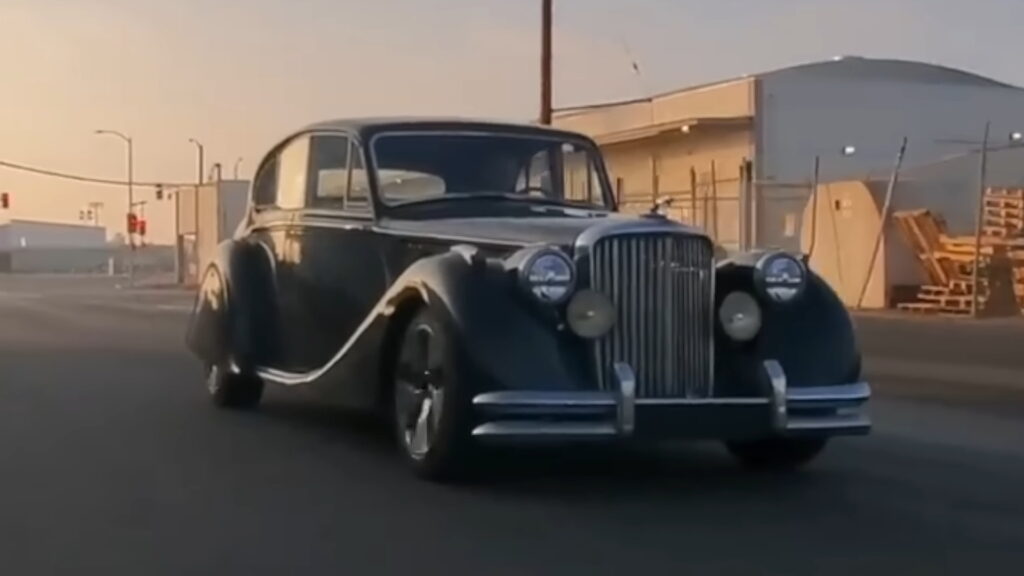If you’re a frequent reader of automotive reviews and news, you may have, at some point in your life, read someone accuse a car being more aerodynamic going backwards than forwards. This is often used as a criticism of that vehicle’s design but, as it turns out, may be an unfair accusation.
That’s not necessarily because it’s untrue, though. It’s just more often the case than you might expect. To prove the point, the YouTube channel SuperfastMatt decided to look at a Jaguar Mark V in aerodynamic simulation software.
The car first hit the road in 1948, so it should perhaps not come as a surprise that it’s less efficient than a modern car. And, indeed, it isn’t. We know that because it was the recipient of a Tesla Model 3 drivetrain swap, and it loses about 25 percent of its electric range as compared to the modern car.
Seen in an air pressure simulation visualizer, it’s easy to understand why. The massive radiator, the upright headlights, the flat windshield, and the quickly tapering rear end all block the wind and create chaos in the airflow, which equate to poor aerodynamics.
Read: How Much More Aerodynamic Can You Make Your Car With A Trip To The Home Improvement Store?
The software estimates that the car has a drag coefficient of 0.457, which the channel’s host points out is more akin to a modern bus than a modern car. Even though the car has wheel covers at the back and a rounded rear end, it’s not very efficient.
However, those same qualities, the smooth trunk, the rear wheel cover, and even the more slowly tapering front end, mean that this car’s shape actually works better going backwards. Indeed, with the model in reverse, the drag coefficient drops to 0.339, which is not only better than before, but is roughly equivalent to a 1995 Chevrolet Camaro.
The thing is, though, that the Jaguar Mark V isn’t alone. In addition to the Austin Allegro, the Porsche 928, and pretty much any other car you’ve heard being accused of this, the design requirements of most vehicles simply give the back end of a car an advantage.
Things like the radiators needing air to keep engines cool and front wheels needing to turn (and therefore not easily housing wheel covers) mean that the back end of a car can be smoother and more efficient. But there are other challenges that make front-facing aerodynamics difficult.
As the channel’s host points out, cars need to be safe in a crash, which means having some space in front of the driver to crumple. Drivers then need to be able to see over that space, which gives most cars a wedge shape that makes them look like a wing… except that it’s traveling backwards.
All of that is suboptimal for aerodynamics, but also means that we have cars that we can see out of and don’t overheat every 150 yards, which I’d say is pretty important.






